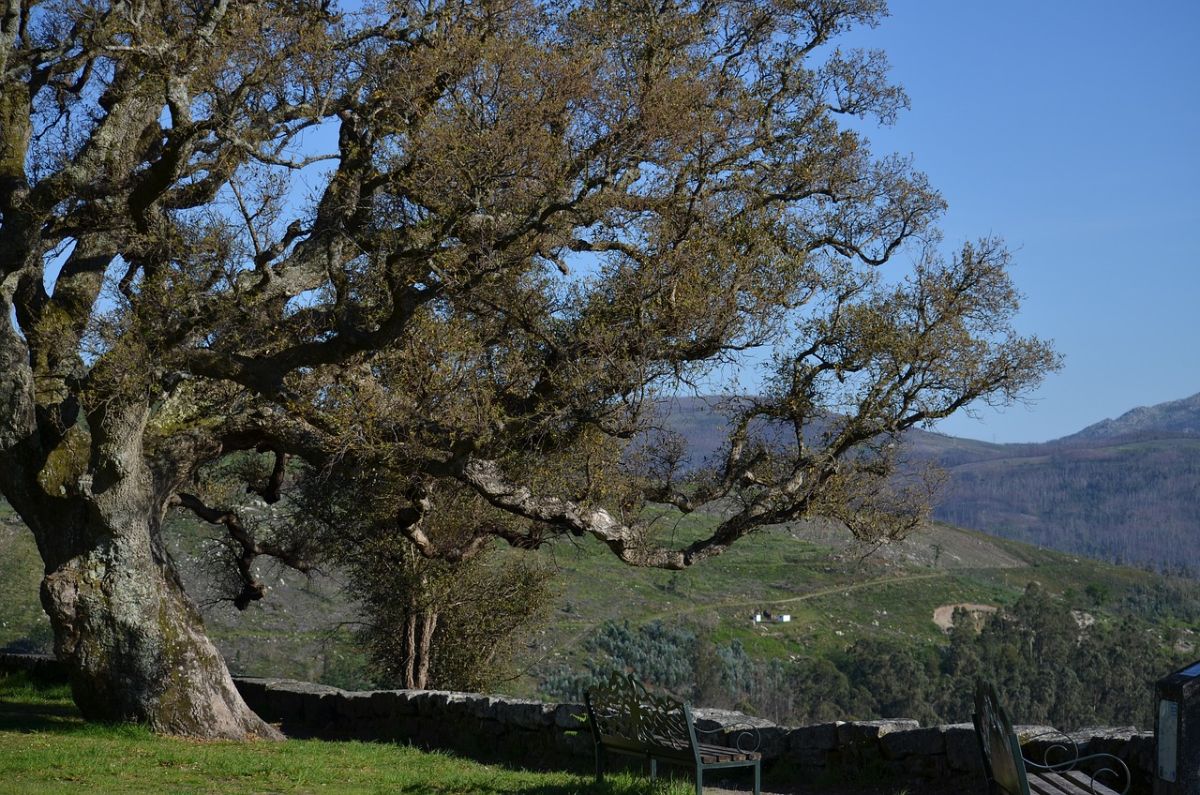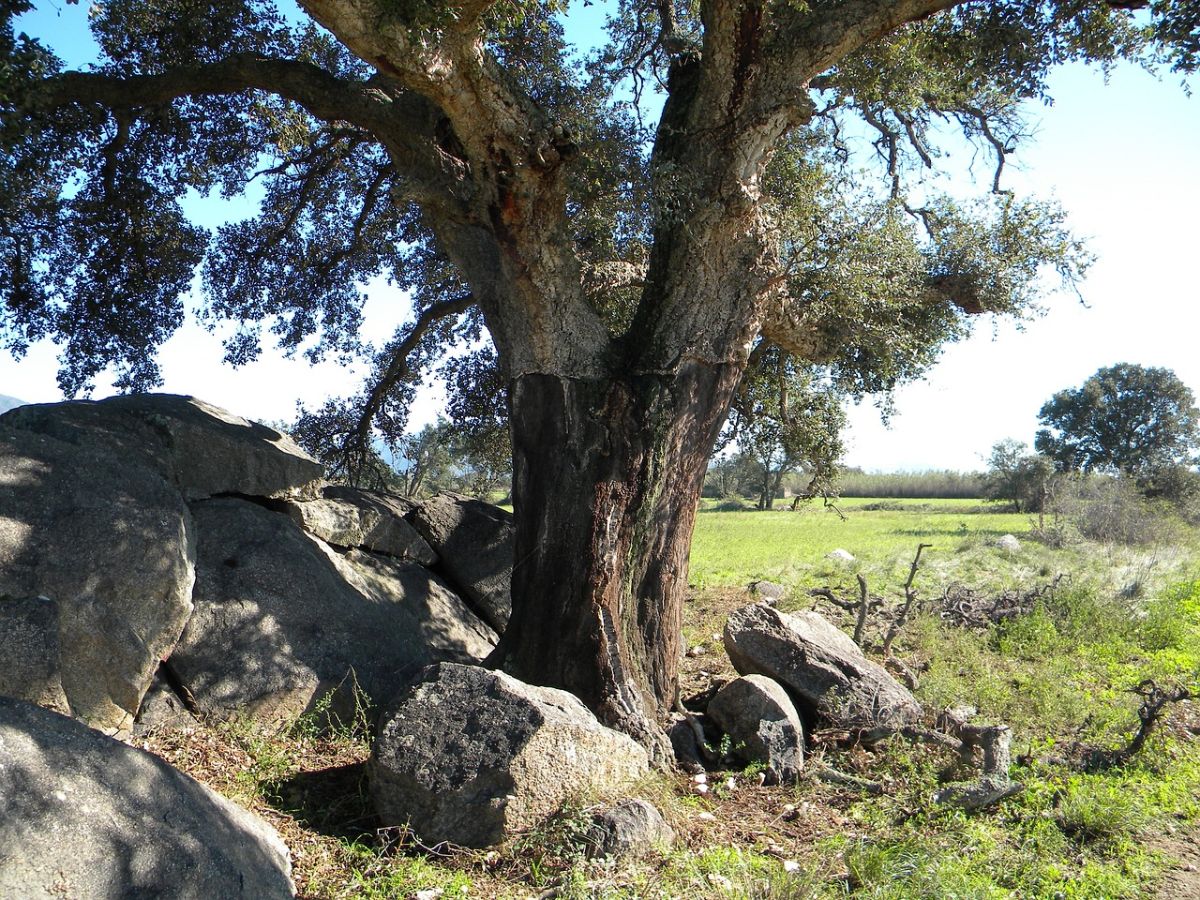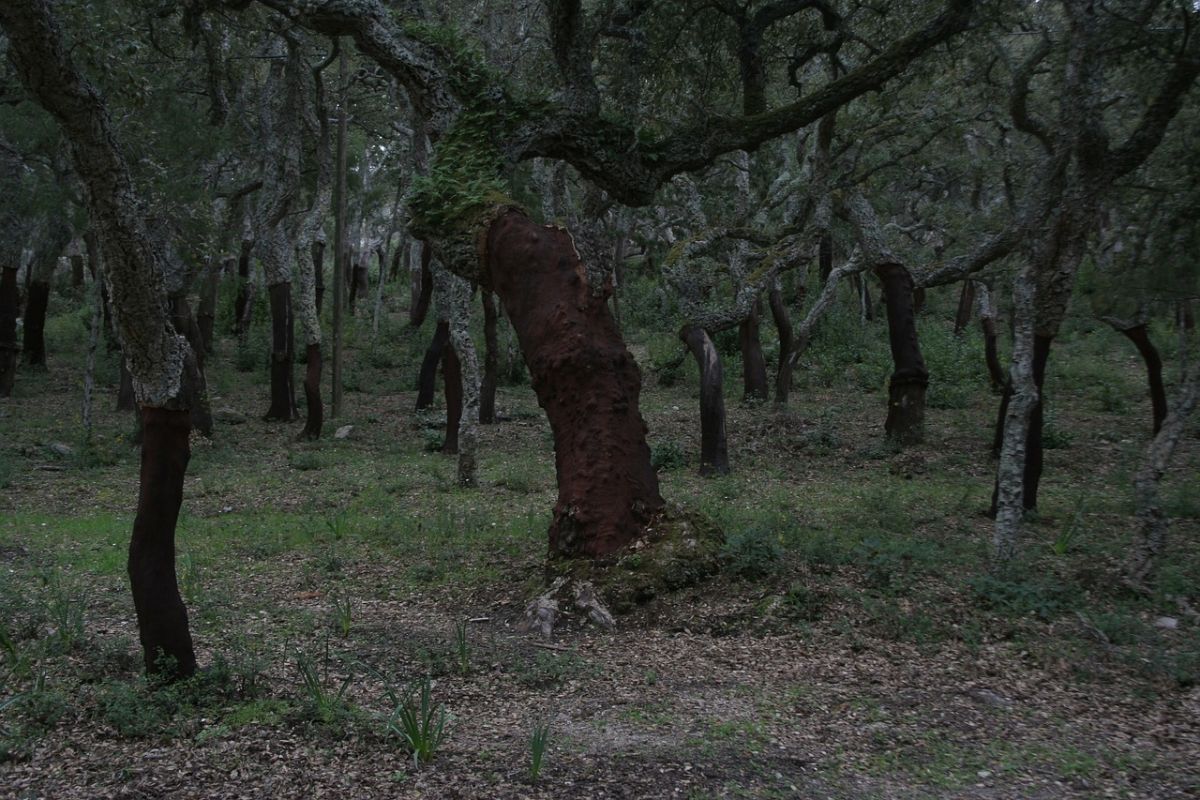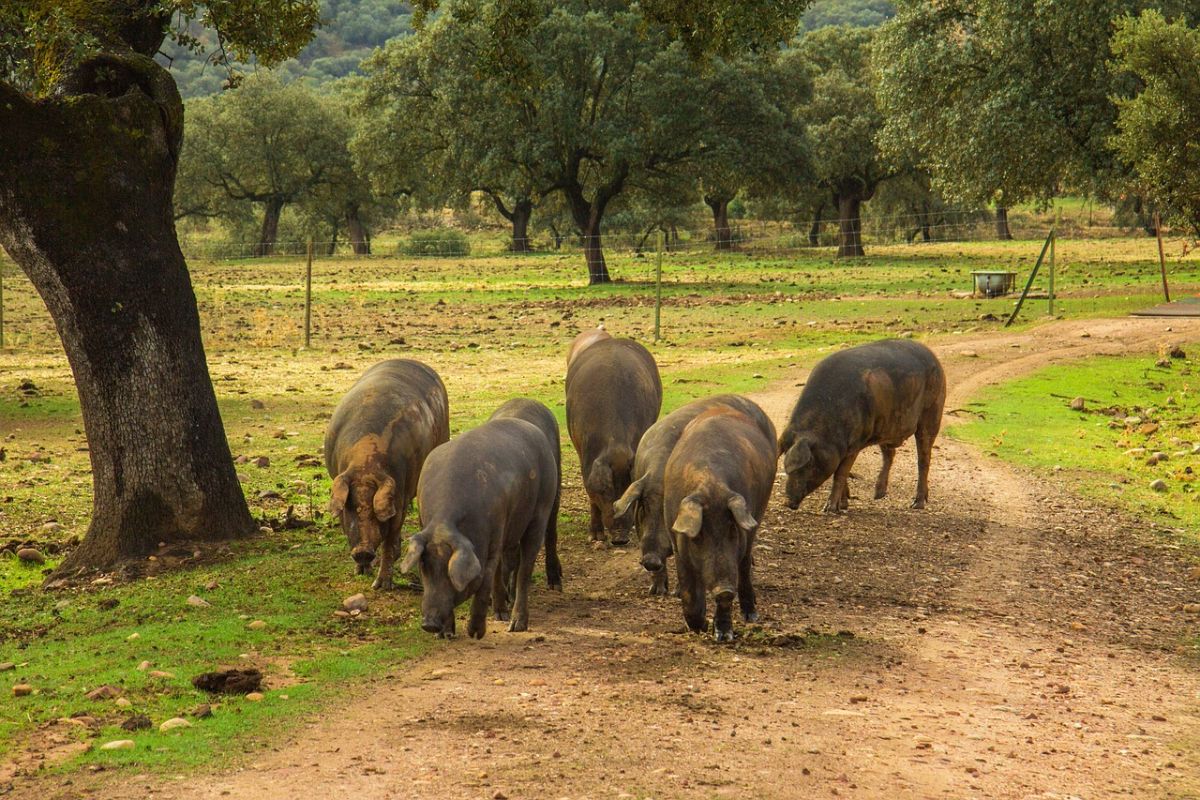
There are times when trees bear fruit but we don't know what it is because its name is not so closely related to that of the tree. For example, what fruit does the cork oak bear?
If you want to know what the fruit it bears is, what it is like and what are the uses that it has, then we are going to tell you everything so that you know what you can do with them.
What fruit does the cork oak bear?

The first thing you should know is that the cork oak, with a scientific name Quercus suber, the acorn bears fruit.
It is a dry fruit that has multiple uses. However, right now you may only have what an acorn looks like on your mind. And that's why we want to tell you more about it to prevent you from confusing it with other fruits, such as holm oak, which are similar (but not the same).
How is the fruit of the cork oak
Before talking about the characteristics of the fruit produced by the cork oak, you should know what the parts of an acorn are.
En general, is made up of three parts:
- Dome, which is the cap and the area where the branch joins. This one is characterized by having some scales and has a strange texture compared to the rest of the parts.
- Nut, which is the fruit itself, the part that is eaten. Inside this are the seeds by which we can get a new cork oak (if done well).
- Stigma, which is the pointed part of the acorn (the other end of these that protects the nut from animals that may try to eat it.
Now that you know a little more about the characteristics of the acorn (the fruit that the cork oak bears), as we have told you, it can be confused with the acorn that the holm oak bears.
How to differentiate them?
Actually, it is easy to tell if the acorn is from an oak or a cork oak. On the one hand, it is because of its size. Cork oak acorns are much smaller than those of holm oaks.
On the other hand, the taste. Those of cork oak are much more acidic than those of holm oak. Although this depends a lot on each tree because not all of them give sweets. In general, all the acorns, when they are collected, are bitter, but after a few weeks they become sweet.
In addition, there is another difference and it is the fact that the cork oak acorns are not eaten. At least not by humans. These are toxic, hence they only have one use (which we will talk about below). On the other hand, those of holm oaks, as long as a treatment is carried out on them, they will be able to be consumed.
How many fruits does the cork oak bear?

Now that you know what fruit the cork oak bears, the acorn, do you wonder how much it produces? Well, it will depend.
En general, a cork oak takes between 15 and 25 years to bear fruit. In addition, it does not do it every year in the same way, but alternates a lot of production with little production. But in the case of the cork oak, its maximum production occurs every three years.
That being said, you should also know that cork oaks give acorns three times (in three maturation periods). That is, you are going to have three harvest times and each one comes out differently:
- The first are the brevas, migueleñas or first-time, which usually ripen in September (hence the name Migueleñas).
- The second, seconds, you will find them between October and November. They are also called medians or martinencas.
- And, finally, the third ones, which are the "latest" or dovecotes, which can be caught between December and February.
What are the acorns of the cork oak used for?

Surely right now you are thinking that acorns are good for eating. but it is certainly not like that. As it happens with those of the oak, these acorns are not edible for humans (Oak ones often undergo a series of processes to make them edible).
Actually, the purpose they have is to feed, only not people but animals. More specifically, pigs. And more specifically, to Iberian pigs.
In fact, if at the beginning we had told you that the acorn of the cork oak is rich in carbohydrates, proteins, oleic acid... surely you would think of the health benefits. But it also has a large amount of tannins that makes it toxic to people, which is why it cannot be consumed.
In the case of animals, they do not have this problem, which is why it is used as a natural and nutritious food for livestock.
How to care for a cork oak so that it bears fruit
If you have cork oaks in your garden, or you want to grow one, knowing how to take care of it will help it to bear fruit and, over time, to have these fruits (if you have a farm nearby you could even sell the acorns). If you only want it to enjoy the tree, it better be healthy, right? And, for this, the care that you should provide is the following:
- Location: always outdoors, and in full sun. We are talking about a large tree, so it requires space (unless you have it as a bonsai).
- Temperature: It supports the heat well, but with the cold things change. In fact, frost can damage the fruits, branches and leaves.
- Substratum: choose one rich in organic matter and somewhat acidic.
- Irrigation: you should know that the cork oak requires that the earth be humid.
- Plagues and diseases: 'dry' is one of the diseases that affects it the most (and can kill the tree), in addition, it also has root rot (due to the Phytophthora fungus), canker…
- Pruning: it is important to prune the branches that hinder others, as well as those that are dead, sick or weakened. It is advisable to do an annual pruning.
- Multiplication: the only way is through the seeds, which you will have to germinate beforehand to be more successful and get cork oak seedlings.
Is it now clear to you what fruit the cork oak bears?